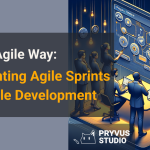Notice: Only variables should be passed by reference in /home/ploi/pryvus.com/public/wp-content/themes/pryvus/template-parts/content-post.php on line 12

Introduction to Custom WordPress Functionality with PHP
Looking to elevate your WordPress site with custom functionality? PHP is your golden ticket!
Custom WordPress functionality with PHP lets you break free from the limitations of standard themes and plugins, offering a pathway to truly tailor your site. From optimizing user experience to integrating unique features, the power of PHP in WordPress customization is unmatched.
In this article, you will learn:
- The fundamentals of PHP in WordPress customization
- Safe methods to add custom PHP code to your site
- Inspiring examples of custom functionalities possible with PHP
Understanding the Basics of PHP in WordPress Customization
Diving into the world of WordPress customization with PHP can seem daunting at first, but understanding the basics is your first step towards harnessing the full power of this versatile language. PHP is not just any coding language; it’s the lifeblood of WordPress, enabling the dynamic and interactive features that make the platform so powerful.

“Mastering the basics of PHP opens up endless possibilities for customizing your WordPress site.”
At its core, PHP allows you to modify the way WordPress behaves without altering the core files themselves. This is crucial for maintaining the integrity and update-ability of your site. Whether it’s through creating custom themes, plugins, or directly modifying functions.php files within your theme, PHP lets you inject your own functionality into WordPress.
For starters, familiarize yourself with the WordPress Codex and Developer Handbook. These resources are goldmines of information on WordPress-specific PHP functions and best practices. Understanding WordPress hooks (actions and filters) is particularly important, as these allow you to “hook into” various parts of WordPress, modifying or adding to the default functionality without touching the core code.
It’s also vital to grasp the concept of the WordPress theme hierarchy and template system. Knowing which files to edit or create for displaying different types of content (posts, pages, custom post types) can help you customize your site’s layout and functionality precisely how you want it.
Lastly, while experimenting with PHP, always work on a child theme or a staging site to avoid disrupting your live site. This practice ensures that your experiments and learning processes do not affect your site’s visitors or functionality.
Understanding PHP in the context of WordPress customization not only enhances your ability to tailor your site but also empowers you to solve complex problems with elegant, efficient code. As you become more comfortable with PHP, you’ll find that your ability to customize WordPress is limited only by your imagination.
How to Safely Add Custom PHP Code to Your WordPress Site
Integrating custom PHP code into your WordPress site is a powerful way to enhance its functionality. However, it’s essential to do this safely to avoid breaking your site or opening it up to security vulnerabilities. Here’s a step-by-step guide on how to add custom PHP code safely.

“Adding custom PHP code safely is crucial for maintaining your site’s integrity and security.”
Firstly, never directly modify the core WordPress files. Doing so can make your site unstable and prevent it from updating properly. Instead, use a child theme or a custom plugin to add your PHP code. A child theme preserves your changes even when the parent theme updates, while a custom plugin allows you to add global functions that aren’t theme-dependent.
To add custom PHP functions related to your site’s appearance or layout, editing your child theme’s functions.php file is the way to go. Access it via the Appearance > Theme Editor in your WordPress dashboard, or use an FTP client to edit the file directly on your server. Always back up the original file before making changes.
If you’re not comfortable editing theme files, consider using a plugin like Code Snippets. This plugin provides a more user-friendly interface for adding PHP code to your site. It allows you to enable and disable individual snippets of code as needed, making it easier to troubleshoot any issues that arise.
When writing your custom PHP code, follow WordPress coding standards to ensure your code is clean, readable, and secure. Use proper sanitization and validation to protect your site from SQL injection and other security threats. Additionally, keep your PHP code minimal and focused on the specific functionality you want to add to avoid slowing down your site.
Finally, always test your custom PHP code on a staging site before applying it to your live site. This practice helps catch any errors or conflicts that could affect site performance or user experience.
By following these guidelines, you can safely add custom PHP code to your WordPress site, unlocking new levels of customization and functionality. Remember, with great power comes great responsibility—so use your coding skills wisely and always prioritize the safety and security of your site.
Examples of Custom WordPress Functionalities Achieved with PHP
Diving into custom PHP development for WordPress opens up a world of possibilities for enhancing your site’s functionality. From creating bespoke user experiences to automating complex processes, PHP can transform your WordPress site into a highly customized, efficient, and powerful platform. Let’s explore some real-world examples of custom functionalities that can be achieved with PHP.

“Implementing custom functionalities with PHP can significantly elevate your WordPress site’s capabilities.”
One common use of custom PHP in WordPress is to develop custom post types and taxonomies, tailored to your content strategy. For instance, a real estate website might benefit from a custom post type for listings, with custom taxonomies for property types and features. This customization allows for more organized, searchable, and user-friendly content.
Custom PHP functions can also be used to enhance user interaction and engagement. For example, you could create a dynamic testimonials section that pulls in reviews from a custom database table, displaying them in a rotating slider. This adds social proof to your site and can be updated easily through the backend.
For membership sites, custom PHP can automate subscription management, content restriction, and user roles. Developing a bespoke membership system allows for granular control over access levels, content delivery, and user data, providing a seamless experience for both users and site administrators.
Another powerful application of PHP is in custom analytics and reporting. By integrating with third-party APIs or creating custom database queries, you can generate tailored reports on user behavior, content performance, or sales data, giving you insights directly within your WordPress dashboard.
Lastly, PHP can be used to create custom forms and workflows. Beyond simple contact forms, you can develop complex multi-step forms for applications, bookings, or surveys. These forms can be integrated with custom post types, email marketing services, or CRM systems, automating data collection and processing.
These examples barely scratch the surface of what’s possible with custom PHP development in WordPress. Whether you’re looking to add specific features, streamline operations, or create a unique user experience, PHP gives you the tools to make it happen. As you embark on your custom PHP projects, remember the importance of best practices, security, and ongoing maintenance to ensure your custom functionalities continue to serve your site well into the future.
Best Practices for Developing Custom PHP Functions in WordPress
Custom PHP development in WordPress is a powerful way to extend your website’s functionality. However, to ensure your custom functions are efficient, secure, and maintainable, it’s crucial to follow best practices. These guidelines will help you write better code, avoid common pitfalls, and keep your WordPress site running smoothly.

“Adhering to best practices in PHP development ensures your WordPress custom functions are robust and secure.”
First and foremost, prioritize security in your custom PHP code. Always validate and sanitize user input to protect against SQL injection and other security vulnerabilities. WordPress offers a range of functions for data validation and sanitization, so make sure to use them whenever you’re handling user data.
Adopt WordPress coding standards to make your code clean, readable, and consistent with the core WordPress codebase. This not only makes it easier for you and others to understand and maintain your code but also ensures compatibility with WordPress updates and other plugins or themes.
Use WordPress hooks (actions and filters) effectively to modify or add functionality without changing the core WordPress files. This approach allows you to update WordPress without losing your customizations and makes your code more portable and modular.
Consider performance implications when developing custom PHP functions. Optimize your code to minimize its impact on your site’s speed and responsiveness. This includes using WordPress’s built-in caching mechanisms, optimizing database queries, and loading resources asynchronously whenever possible.
Document your code thoroughly. Adding comments and documentation helps you and other developers understand the purpose and functionality of your custom PHP code. This is especially important for complex functions or when working in a team environment.
Test your custom functions extensively in a staging environment before deploying them to your live site. This helps you identify and fix any issues without affecting your site’s users or SEO rankings.
Finally, keep your custom PHP code organized and modular. Use a custom plugin or a child theme’s functions.php file for your custom code, rather than modifying the WordPress core files directly. This makes your customizations more manageable and less prone to conflicts with WordPress updates or other plugins.
By following these best practices for custom PHP development in WordPress, you can create custom functionalities that are not only powerful and unique but also secure, maintainable, and efficient. Whether you’re building custom plugins, themes, or adding bespoke features to your site, these guidelines will serve as a foundation for high-quality WordPress development.
Tools and Resources for Advanced PHP Development in WordPress
Embarking on the journey of custom PHP development in WordPress can be both exciting and challenging. Fortunately, a wealth of tools and resources are available to support you in enhancing your site with custom functionalities. Whether you’re a seasoned developer or just starting out, these tools can help streamline your workflow, improve your code quality, and expand your WordPress development skills.

“Leveraging the right tools and resources is essential for successful advanced PHP development in WordPress.”
One of the most critical tools for any WordPress developer is a local development environment, such as Local by Flywheel, XAMPP, or MAMP. These environments allow you to develop and test your WordPress site locally, without affecting the live site. This is crucial for experimenting with custom PHP code and debugging in a safe environment.
For code editing and development, an Integrated Development Environment (IDE) or a code editor like Visual Studio Code, PhpStorm, or Sublime Text is invaluable. These tools offer features such as syntax highlighting, code completion, and error detection, making it easier to write clean and error-free PHP code.
Version control systems, notably Git, are indispensable for managing changes to your codebase. They allow you to track revisions, collaborate with other developers, and revert to previous versions of your code if necessary. Platforms like GitHub, Bitbucket, or GitLab also facilitate code sharing and collaboration among the WordPress development community.
WordPress-specific resources, such as the WordPress Codex and Developer Handbook, provide comprehensive guides on WordPress functions, hooks, and APIs. These official documents are essential for understanding how to work within the WordPress framework effectively.
Online courses and tutorials from platforms like Udemy, Codecademy, or WPBeginner offer structured learning paths for PHP development in WordPress. From beginner guides to advanced development techniques, these resources can help you build your skills progressively.
Finally, WordPress developer communities, such as the WordPress Stack Exchange, Advanced WordPress Facebook Group, or WP Tavern, are great places to seek advice, share knowledge, and stay updated on the latest WordPress development trends.
Equipping yourself with the right tools and resources is a significant step toward mastering custom PHP development in WordPress. By leveraging these assets, you can enhance your development process, contribute to the WordPress community, and create more sophisticated and customized WordPress sites.


